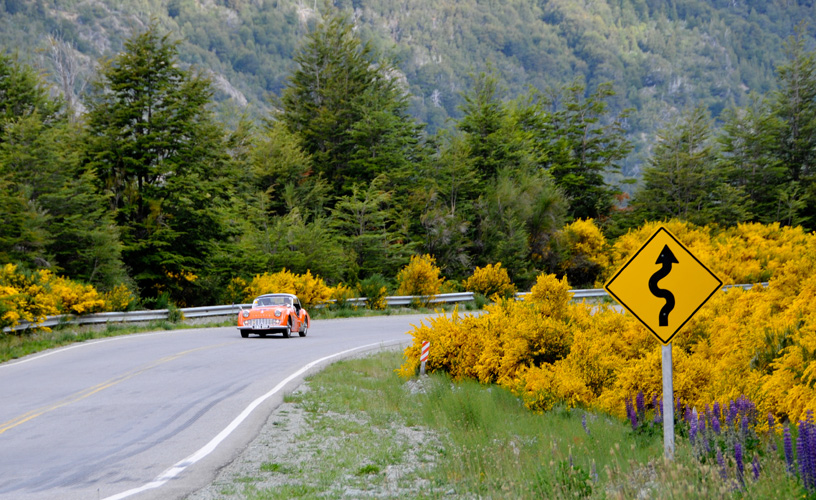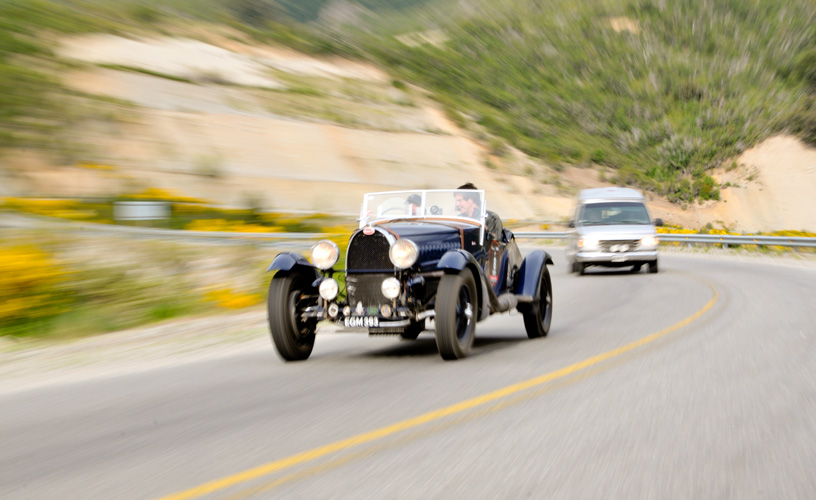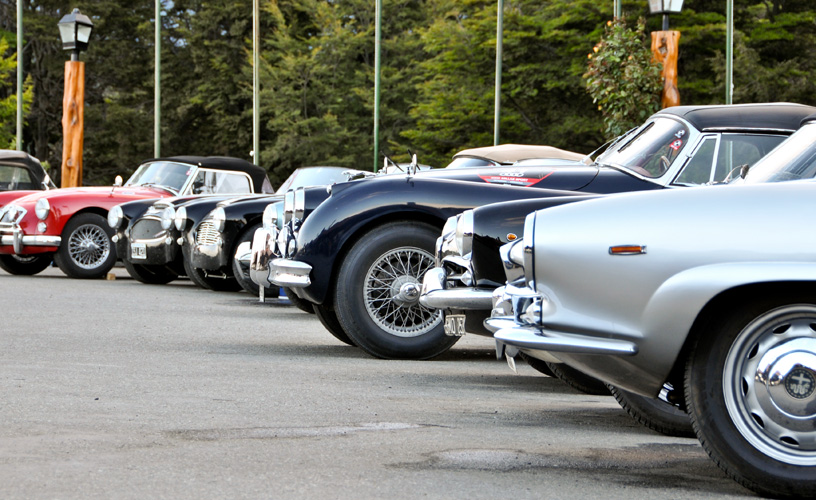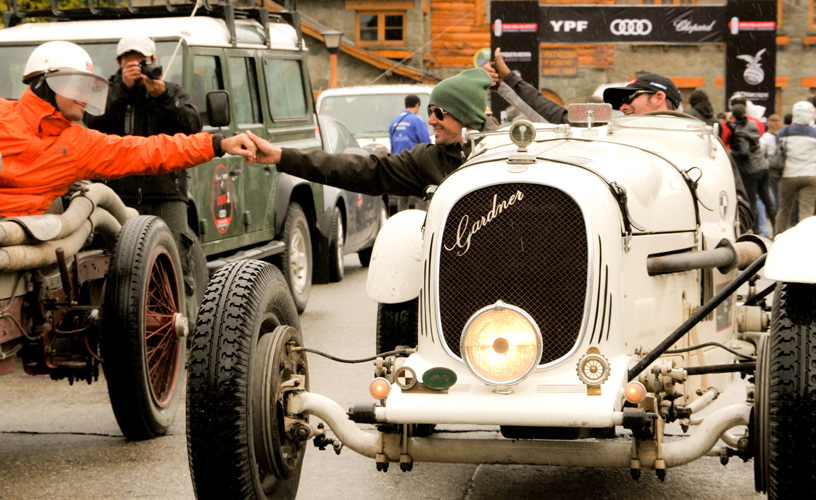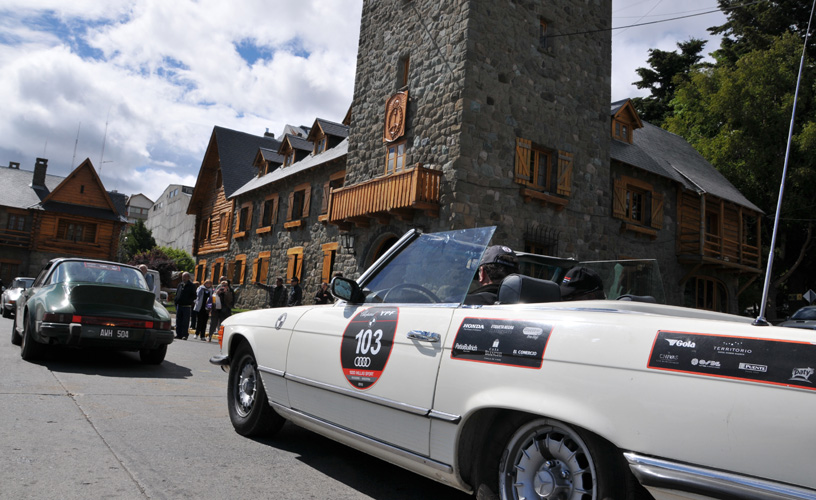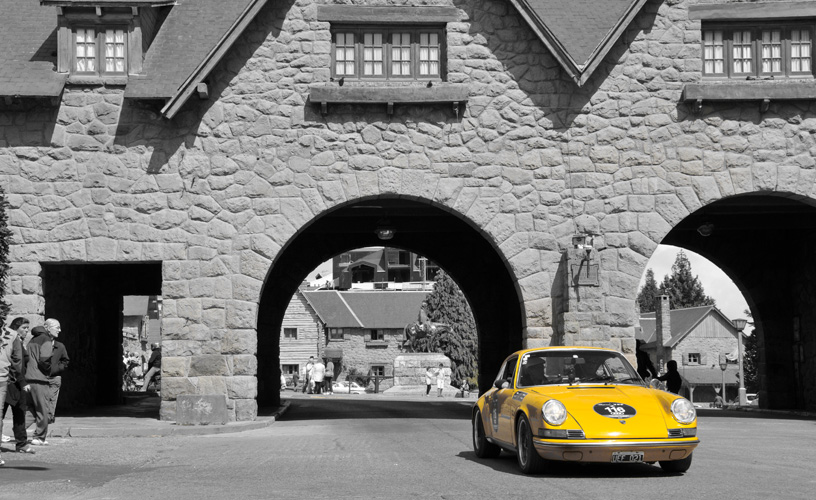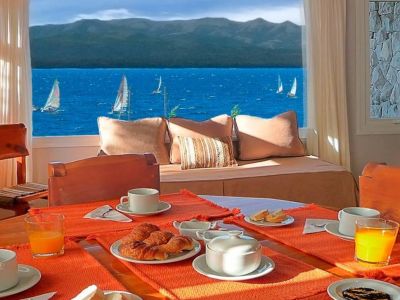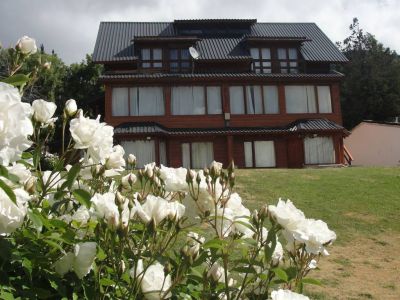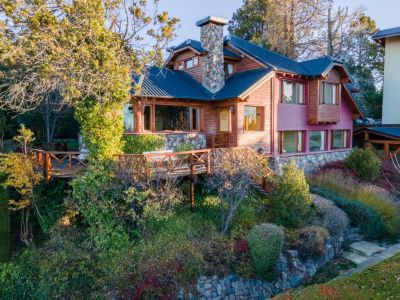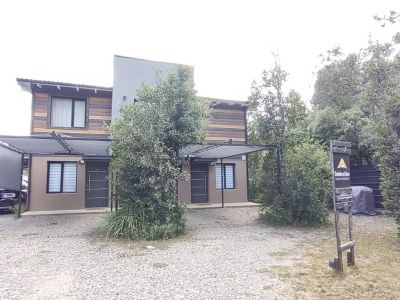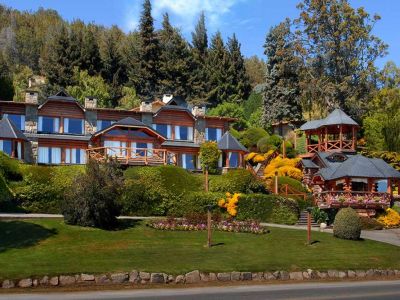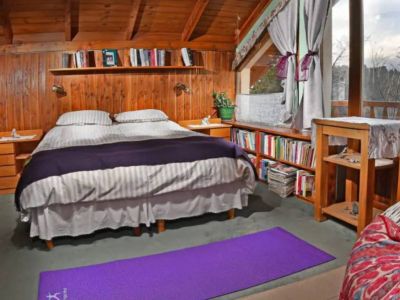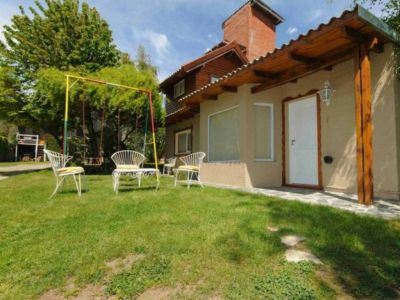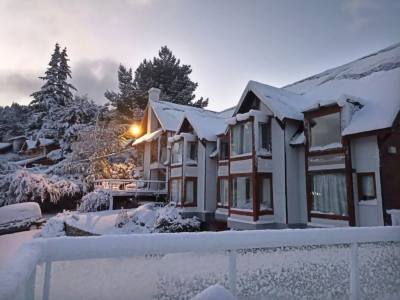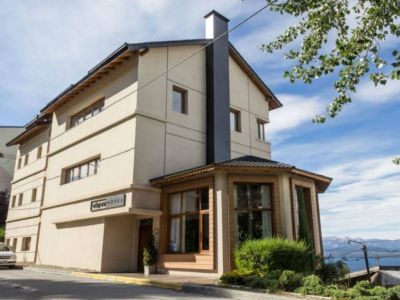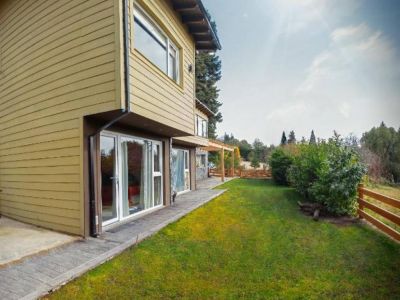The Italian Mille Miglia, a famous competition that summons the most prestigious drivers in the world, is the main reference of the 1000 Millas Sport, run in the surroundings of San Carlos de Bariloche.
Both competitors and spectators enjoy these fantastic cars that seem to have remained unchanged in time. At first sight, the differences with present-day cars are huge. Some of them display bombastic engines whose hoods are opened sideways through hinges. As well, wooden dashboards and steering-wheels, wheels a little thicker than mountain bike wheels, even with metallic beams can be seen here and there. But when it comes to listening to their engines, they resound with their typical strength and energy.
This is an exceptional race with an impeccable organization that starts and ends every one of its three stages in the gardens of the beautiful Llao Llao Hotel. The local roads are the scene around which these machines travel following traffic rules and without interrupting the regular circulation of vehicles.
The Famous 1000 Millas Sport
Behind every bend on the road, we were waiting with our camera trying to capture the very second on which a 1926 Bugatti, an Alfa Romeo GT or a Maserati should pass right in front of our eyes and ears. The elegant lines of those sports cars was completed with the perfect expertise of pilots and co-pilots.
The zigzagging of the classic undulated road and the double yellow line commanded most of the actions amidst hills and ravines. Nature waited for drivers with its best spring costumes, with blooming yellow gorges and blue lupines.
“Is it easy to find spare parts for engines built in 1921 or 1935?”, “Do you always drive the same car?”, were the classic questions curious people made as they approached the cars in the competition private stations.
The competitors answered all these questions and commented that between one race and the next, the engines are disassembled and reassembled completely. Some spare parts are available in the USA and Europe and the rest is solved with lathing and milling, respecting the original designs. There is true comradeship among competitors and their conversations always revolve around their "toys" and mechanics.
Little by little, we understood that those cars must be authorized by FIVA (Fédération Internationale des Véhicules Anciens), that some of them belong to motor-racing teams and that some gentleman drivers share the maintenance, the shuttles and the mechanic works, thus proving that friendship is stronger than sport success.
We learned that first-finishers are not always the winners, as there is a handicap and skills that demand expertise. For instance, drivers should cover every lap between tires fixed to the ground with a distance of about 100 meters in a certain period. Some pilots step on them with an accuracy of hundredths of a second and some others fail to fulfill this aim.
Immediate Glentlemanliness
It was common to see participants help one another when a mechanic inconvenience appeared in the solitary Patagonian roads. Women were also present in the competition, as co-pilots and even as pilots without any companion.
Cutting-edge elements such as Go Pro cameras, GPS, cell phones, and iPhones travel with the drivers to show that ancient and new devices can work together.
"Coming back to Bariloche has been very special. It was nice to enjoy the scenes, the trials, everything...” “It seems easy but it is not, especially having great drivers like Giordano Mozzi, champion of the Mille Miglia 2011, Daniel Erejomovich and the Acevedos, well-deserved Argentinian champions.” Deep words by a three times champion: Juan Tonconogy together with his copilot Guillermo Berisso, who had shared a car successfully during a competition in Italy.
We bade farewell to those old machines whose engines still roar. There is no doubt that they represent one more reason to enjoy the wonderful territory around the City of Bariloche late in November every year.
Club de Automóviles Sport
Address: Simon de Iriondo 820 – Victoria – Provincia Buenos Aires
Email: info@1000millas.com
Mónica Pons
Eduardo Epifanio
